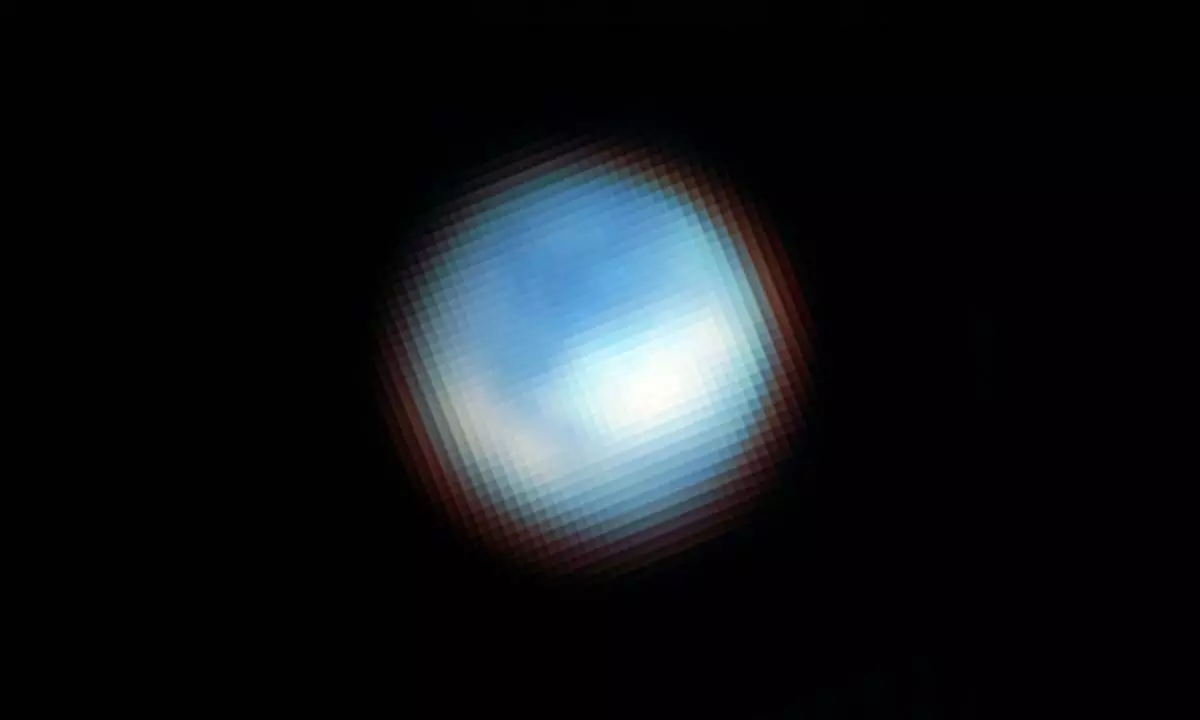Webb telescope finds carbon source on Jupiter’s Moon Europa
Share :

The next generation powerful James Webb Space Telescope (JWST) has found a carbon source on the surface of Jupiter’s Moon Europa.
Washington: The next generation powerful James Webb Space Telescope (JWST) has found a carbon source on the surface of Jupiter’s Moon Europa.
Europa is one of a handful of worlds in our solar system that could potentially harbour conditions suitable for life. Previous research has shown that beneath its water-ice crust lies a salty ocean of liquid water with a rocky seafloor.
However, planetary scientists had not confirmed if that ocean contained the chemicals needed for life, particularly carbon.
Now, astronomers using data from JWST have identified carbon dioxide in a specific region on the icy surface of Europa.
Webb finds that on Europa’s surface, carbon dioxide is most abundant in a region called Tara Regio -- a geologically young area of generally resurfaced terrain known as "chaos terrain".
The surface ice has been disrupted, and there likely has been an exchange of material between the subsurface ocean and the icy surface.
Analysis indicates that this carbon likely originated in the subsurface ocean and was not delivered by meteorites or other external sources. Moreover, it was deposited on a geologically recent timescale.
This discovery has important implications for the potential habitability of Europa’s ocean.
"We now think that we have observational evidence that the carbon we see on Europa’s surface came from the ocean. That's not a trivial thing. Carbon is a biologically essential element," said Samantha Trumbo of Cornell University in Ithaca, New York, lead author of the second paper analysing these data.
"Previous observations from the Hubble Space Telescope show evidence for ocean-derived salt in Tara Regio," she said.
"Now we’re seeing that carbon dioxide is heavily concentrated there as well. We think this implies that the carbon probably has its ultimate origin in the internal ocean."
The findings are described in two papers, published in the journal Science.
Carbon dioxide was identified using data from the integral field unit of Webb’s Near-Infrared Spectrograph (NIRSpec). This instrument mode provides spectra with a resolution of 320 x 320 kilometres on the surface of Europa, which has a diameter of 1,944 miles, allowing astronomers to determine where specific chemicals are located.
The astronomers also looked for evidence of a plume of water vapor erupting from Europa’s surface.
Researchers using NASA’s Hubble Space Telescope reported tentative detections of plumes in 2013, 2016, and 2017. However, finding definitive proof has been difficult.
The new Webb data shows no evidence of plume activity, which allowed the team to set a strict upper limit on the rate of material potentially being ejected. The team stressed, however, that their non-detection does not rule out a plume.
These findings may help inform NASA’s Europa Clipper mission, as well as ESA’s (European Space Agency’s) upcoming Jupiter Icy Moons Explorer (JUICE).
Webb is an international programme led by NASA with its partners, ESA (European Space Agency) and the Canadian Space Agency.
















